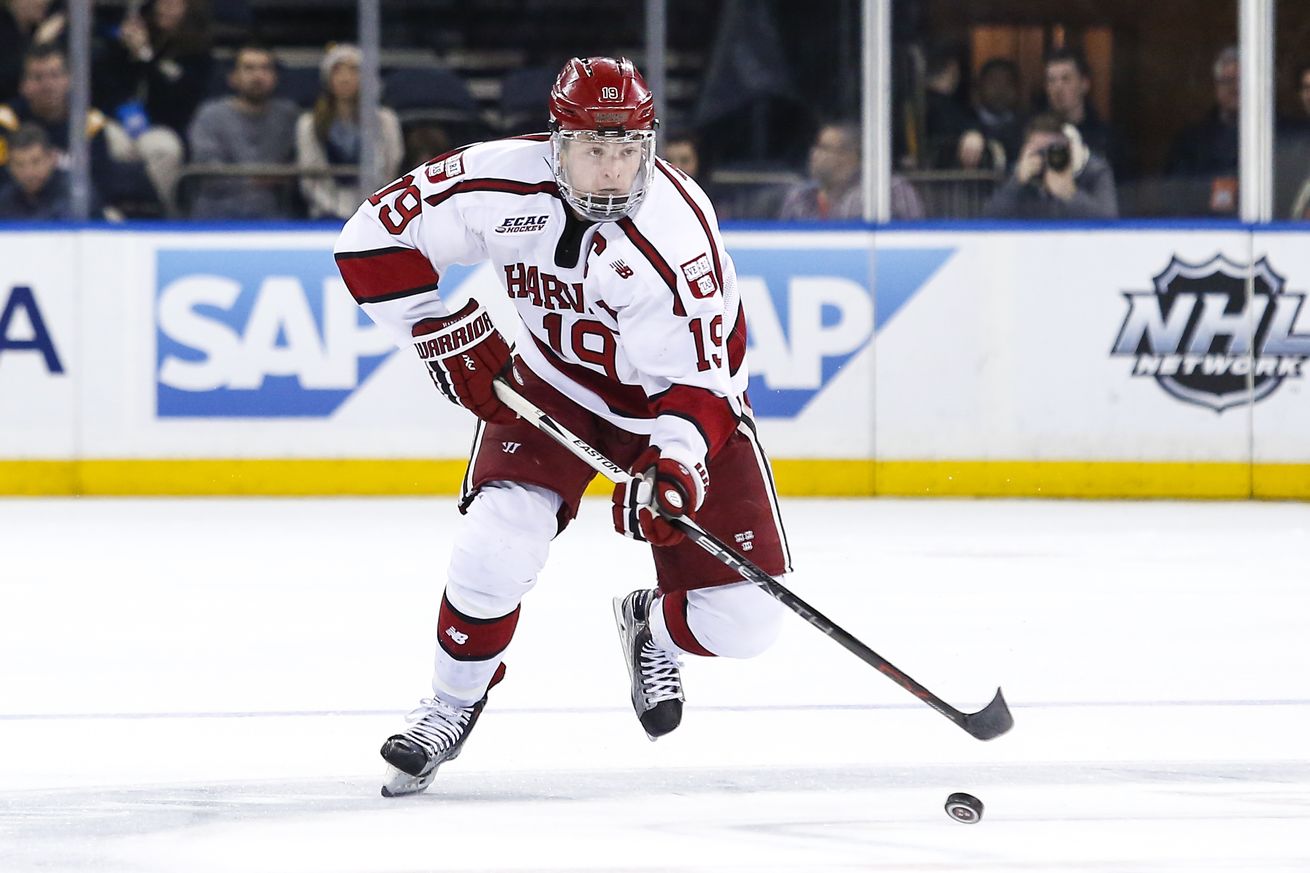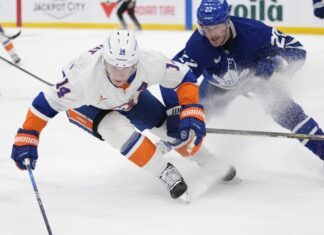The Decision is in and the New York Rangers are the winners of the Jimmy Vesey sweepstakes.
Largely due to it coinciding with the slowest period of the year for hockey news, this final decision will continue to generate disproportionate reactions, with parts of 29 fan bases admonishing the kid for poorly thought out reasons.
What was so enticing about Vesey all along is obvious: He’s a free-to-acquire, probably NHL-ready, cost-controlled prospect who dominated college hockey the past two seasons as its best goal scorer and most recent Hobey Baker winner. Of course teams lined up.
A (potential) top 6 forward on an ELC is everything in the NHL's cap world.
— Buyout Candidate (@RangerSmurf) August 19, 2016
There will be no shortage of partisans from the fan bases of spurned teams calling the whole process a low-character move on Vesey’s part. We’ve already heard it for months, so it’s not new or surprising. Generally speaking, fans of a professional sport have a hard time not labelling a player selfish for wanting a measure of control beyond collecting a great paycheque to play a game he loves (all the while ignoring the countless times each year that a filthy-rich owner pulls the rug out from under a player and calls it “only business”).
There isn’t a leg to stand on in Buffalo’s case, not even remotely. Tim Murray and the Sabres knowingly burned a third round pick to acquire a player who was transparent about his intention to test free agency by that point, with the thinking being that they could get to Vesey first by talking to him whenever they wanted for a few months. It didn’t work, nor was it ever likely to.
As for Nashville, Vesey followed the letter of the law as it’s written. It’s not even that he’s found a loophole of some kind; they’re just the rules of the CBA as it is currently constituted, for a couple of understandable reasons.
The Predators were in a tough spot due to Vesey’s late-bloomer trajectory. A third round draft pick out of the EJHL in 2012 after getting passed over in the 2011 draft, there was no rush to get Vesey signed. He went the college route and wasn’t overly productive in his first two seasons in the ECAC. He is now viewed by some as a first-round, future top-six calibre prospect after he scored 56 goals over his final 69 college games.
A team is no longer in total control if they allow a coveted college player to reach his senior year having not yet signed an NHL contract, but the Preds didn’t even really know they had a player worth signing until Vesey’s junior season. He decided to finish his education at Harvard, and he took on some risk in making that choice as far as his putting off his pro career.
He deferred his ELC signing bonus money and forewent the guarantee that he would, at minimum, play a few years of professional hockey earning an AHL salary. It worked out well — he finished his degree at a prestigious university, proved that his junior season success was more than a blip, and earned the right to pick his first NHL destination.
Vesey is still bound to the same entry-level contract rules as any other player, except he is at a mature age for a player starting his first NHL deal. NHL clubs are attracted to the possibility that he could be ready to play at the highest level right away. By that same token, there is an expectation that Vesey has to hit the ground running — at least to some degree. That is a lot of pressure on the player; as his coached reminded us recently, it’s a big jump from the college to the NHL regardless of age. Here’s Scott Cullen corroborating that point with data:
Since 2005-2006, there have been a dozen 23-year-old rookie forwards who have scored at least 30 points. None of them did it while making the jump directly from the NCAA.
It makes sense that Vesey wanted to be careful about where he starts his career and what kind of opportunities he’s going to receive in terms of minutes and linemates. He has two short seasons before he will be seeking his second contract, at which point he will be 25 years old. He doesn’t have as much runway available to him as a 20 year old breaking into the pros.
In an attempt to quantify Vesey’s college career a little bit — among past graduates out of the ECAC (players who played a full four seasons) who went on to significant NHL careers — Vesey’s 1.13 points per game stacks up similarly to Lee Stempniak (1.12) and Dominic Moore (1.15), and better than Matt Moulson (1.03) and Alex Killorn (0.84). That’s respectable if not spectacular company, but it’s also worth mentioning that Vesey took a more significant step forward than normal in his final two seasons of college.
The Leafs didn’t land Vesey in the end, but the nice thing about it is that there is a burgeoning group of 23 and under offensive talent already in the organization’s cupboards, much of it far more proven in terms of pro experience and a few of which are no longer waiver exempt headed into a crowded competition at camp. Vesey would’ve been a nice bonus, but he remains a mystery box and this isn’t a major missed opportunity by any means for a franchise that is well taken care of in terms of the depth of young offensive talent in the pipeline — specifically at the wing position.






























![Craig Berube Post Game, Leafs 6 vs. Sabres 3: “Our team played really hard in front of [Murray]… They were dialed in for him” Craig Berube, Toronto Maple Leafs head coach](https://mapleleafshotstove.com/wp-content/uploads/2024/12/berube-leafs-tor-pg-100x70.jpg)


